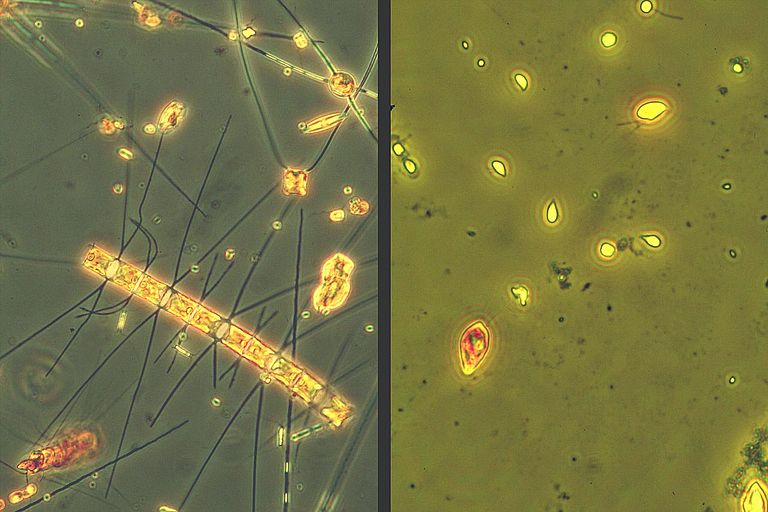Big Advantage for the Small
23 July 2009/Kiel. The ice is melting, the sea level is rising and species are conquering new habitats. The warming of the world climate has many consequences. In the current issue of the renowned journal “Proceedings of the National Academy of Sciences” researchers from the Leibniz Institute of Marine Sciences (IFM-GEOMAR) and the HYAX Lake Ecosystem Laboratory in Aix-en-Provence report that climate change influences the size of aquatic organisms.
For a long time scientists have observed the biological consequences of global climate change. One of the most famous symptoms is the shift of habitats from the equator further north or further south. More recent studies show that not only the habitats but also the size of organisms is affected. Dr. Martin Daufresne of the HYAX Lake Ecosystem Laboratory in Aix-en-Provence, France, as well as Prof. Ulrich Sommer and Dr. Kathrin Lengfellner of the Leibniz-Institute of Marine Sciences (IFM-GEOMAR) in Kiel have proved that global warming leads to reduced body size of organisms in the ocean and in freshwater. Very different organisms showed this tendency: bacteria, plankton-algae, zooplankton and fishes in the North and Baltic Sea and in French rivers.
Three mechanisms seem to play a role in this process. First: The proportion of smaller species grows. Second: The proportion of smaller individuals grows within one species. And third: The animals reach sexual maturity with smaller body size.
“This development affects the functioning of the whole eco-system: The body size is decisive for what animals can eat and by whom they are eaten. A shift to smaller species and individuals within the fish population could lead to a reduction of zooplankton because small fish will eat less fish and more zooplankton. This could pave the way fvor massive and unpleasant algal blooms. Furthermore, with smaller fish the economic value of fishery declines”, explains Prof. Sommer.
The bacteria, algae and zooplankton were examined in experiments of Baltic Sea plankton as part of the German Research Foundation-programme AQUASHIFT. The results about fish size are based on long term measurements in the North Sea, the Baltic Sea and in French Rivers.
Original publication:
Daufresne M, Lengfellner K, Sommer U (2009) Global warming benefits the small in aquatic ecosystems. PNAS Early edition doi/10.1073/pnas.0902080106
Contact:
Jan Steffen (Public relation), Tel. +49 431 600-2811, jsteffen@geomar.de



